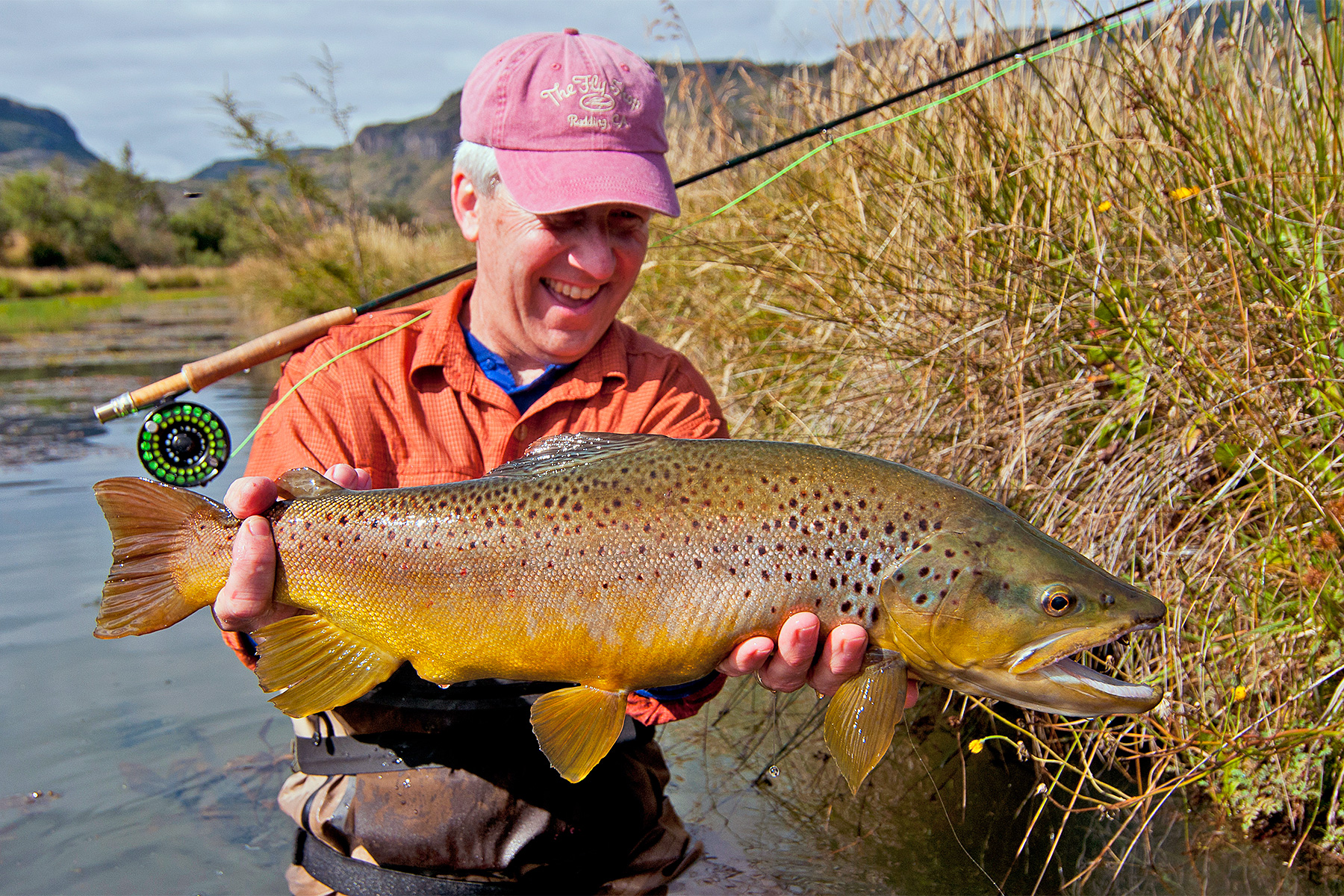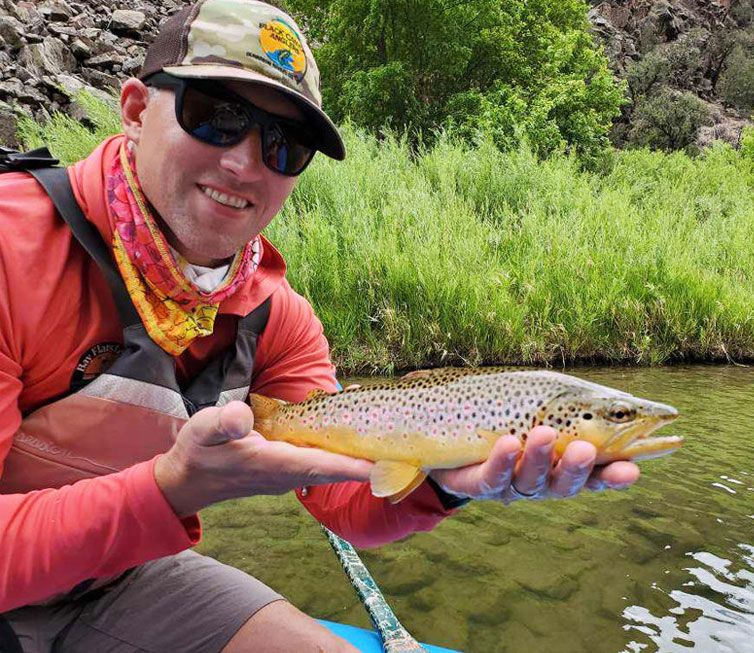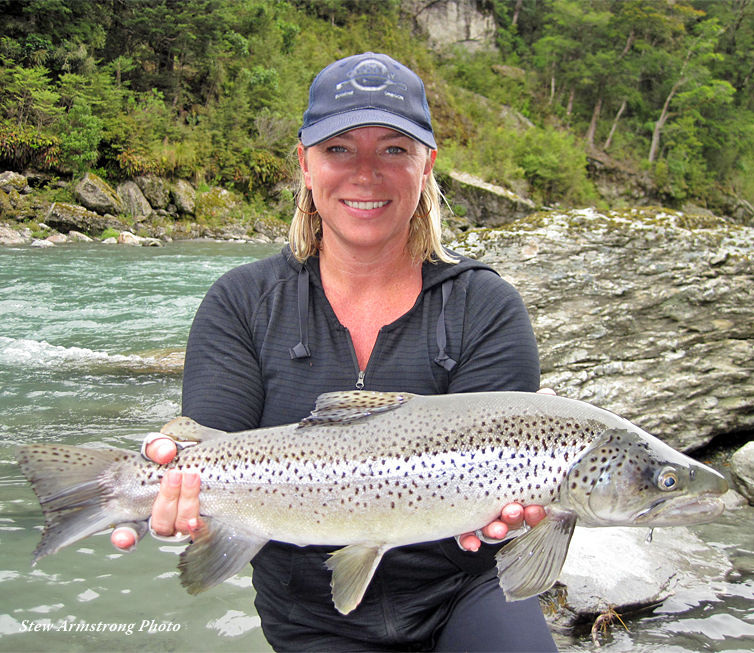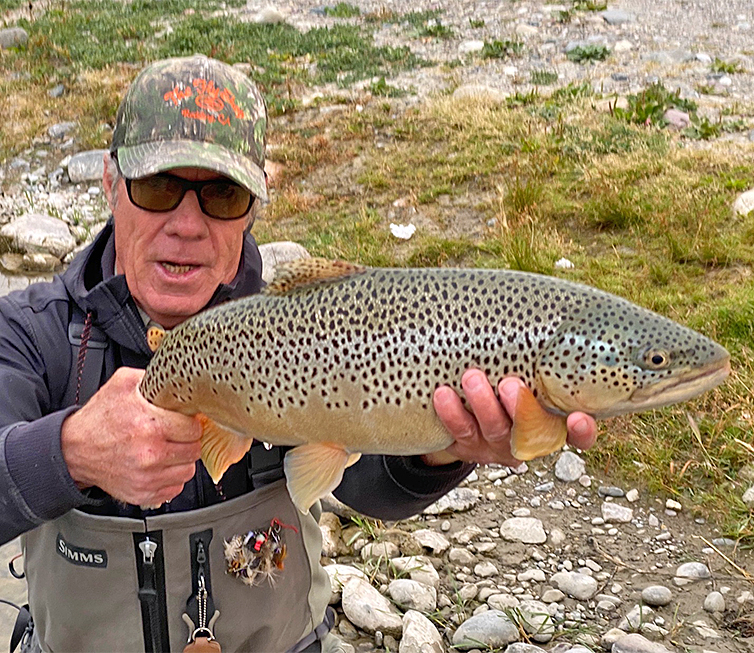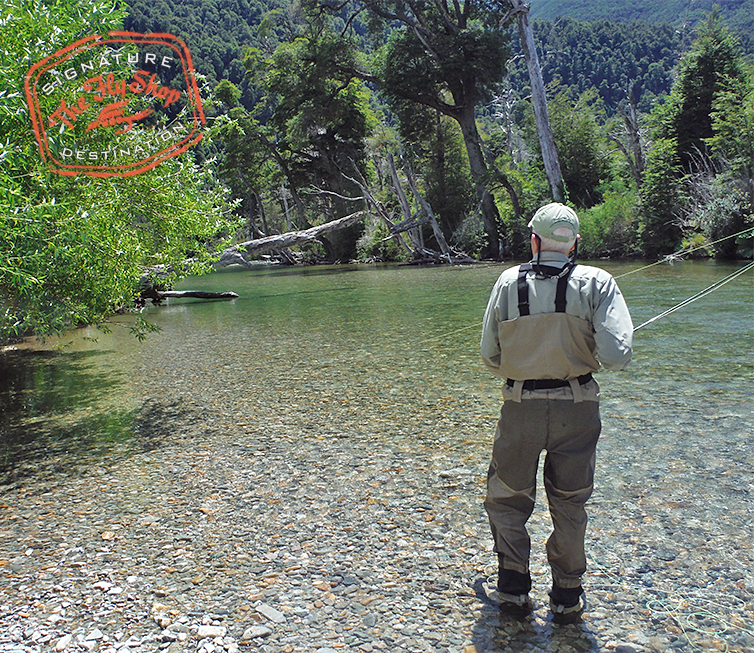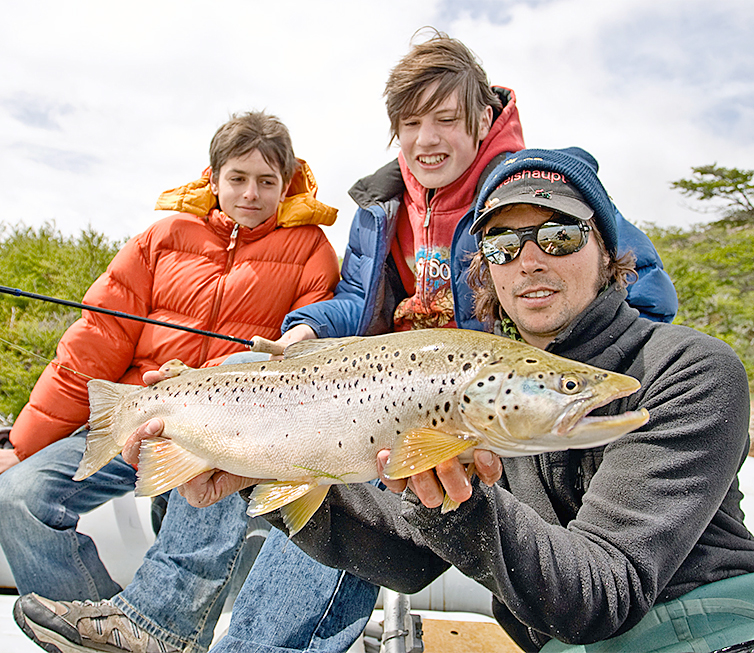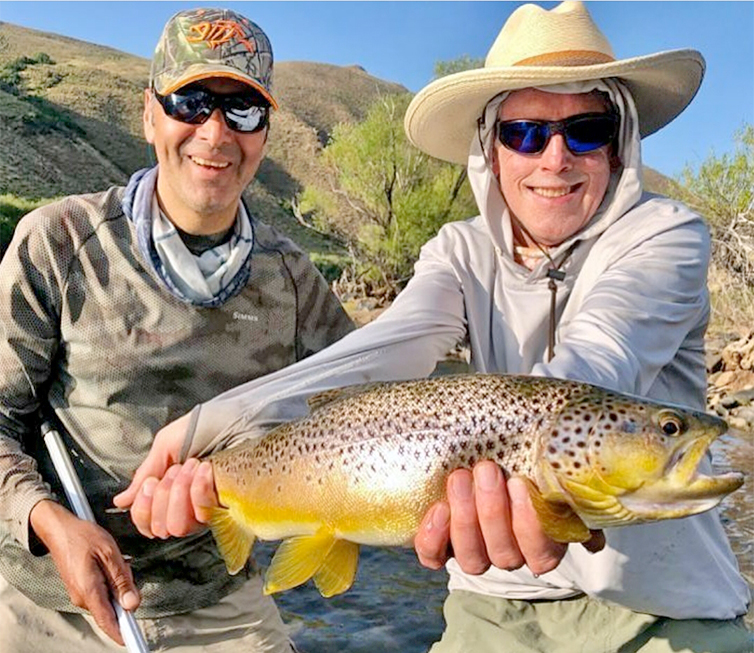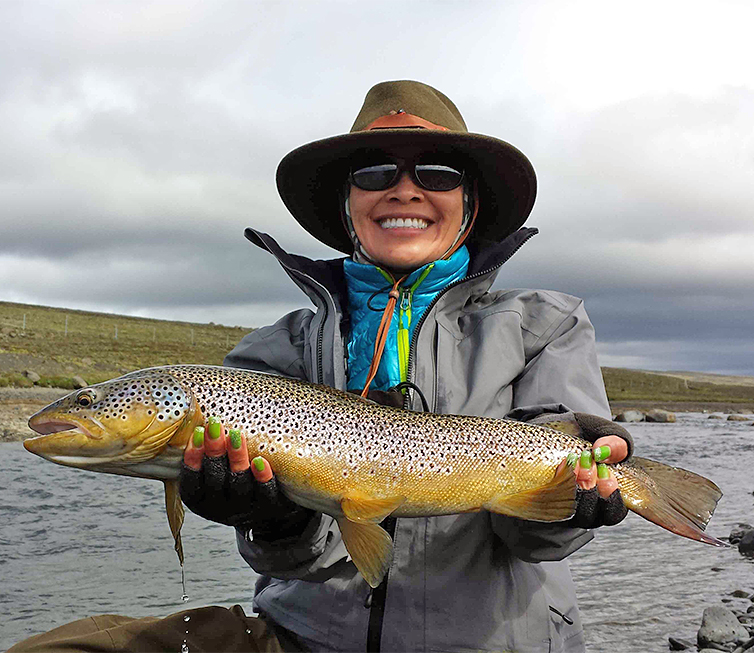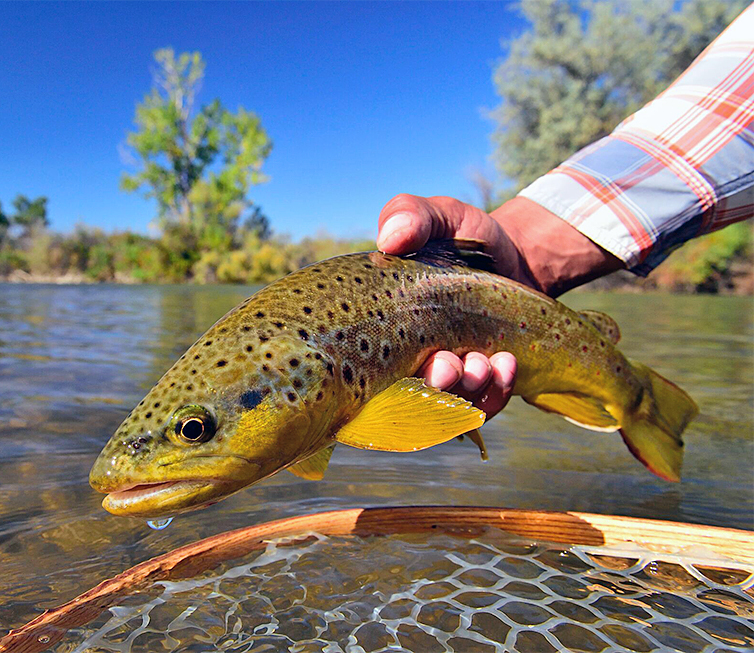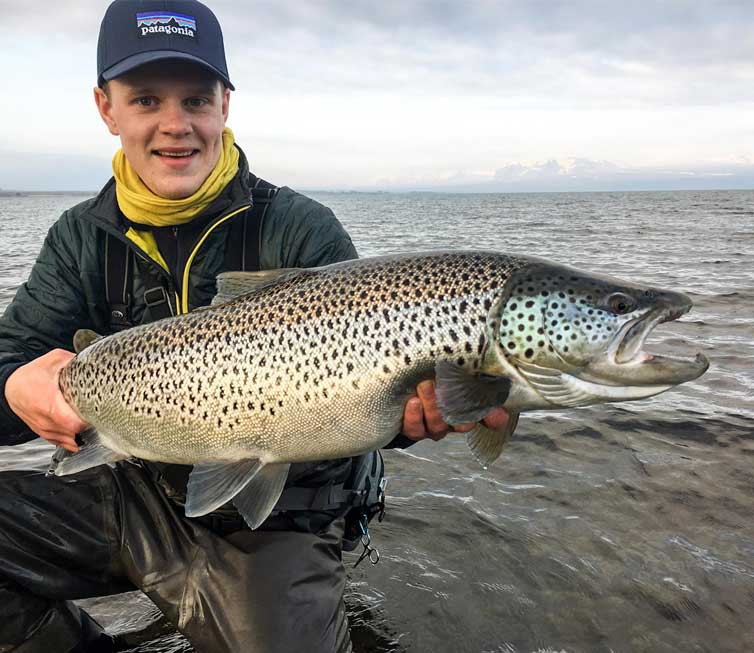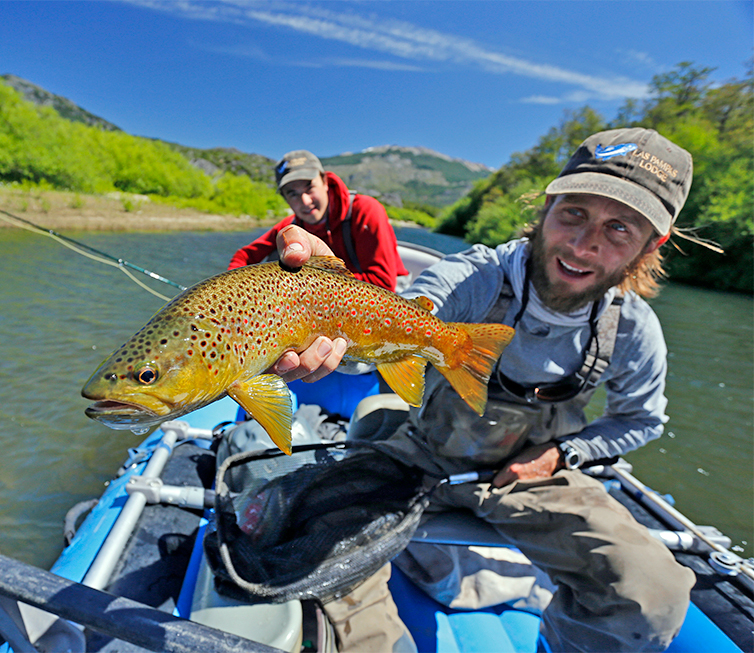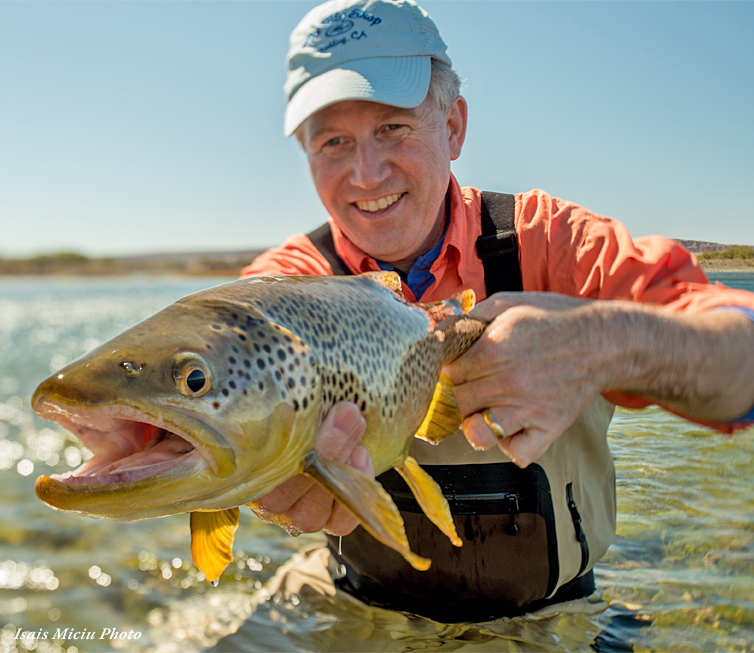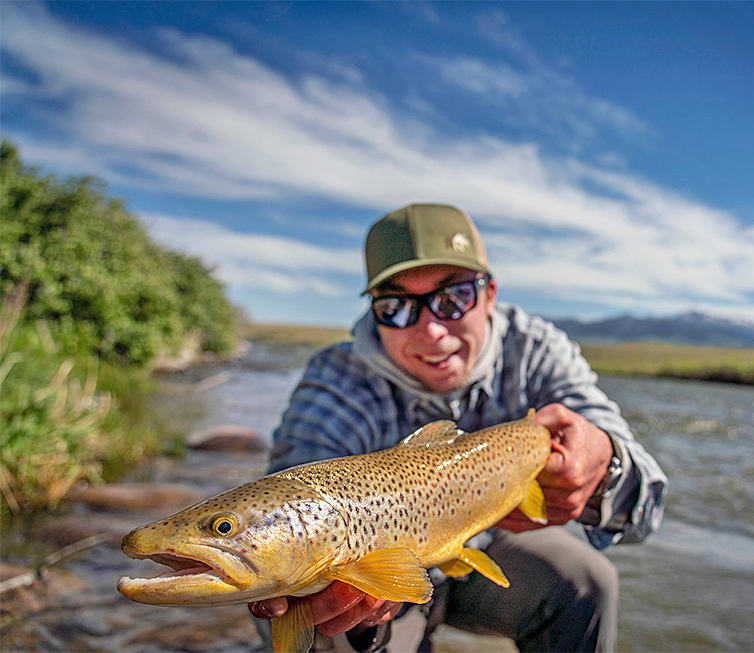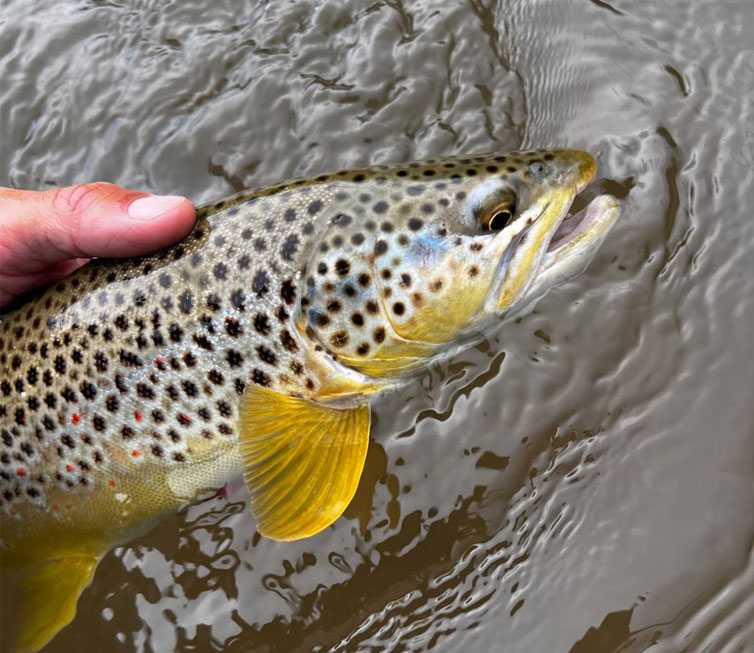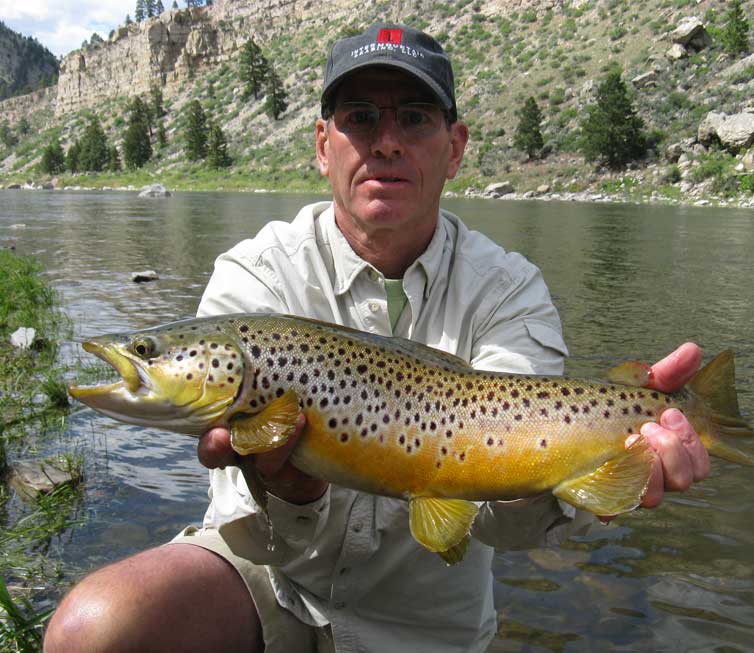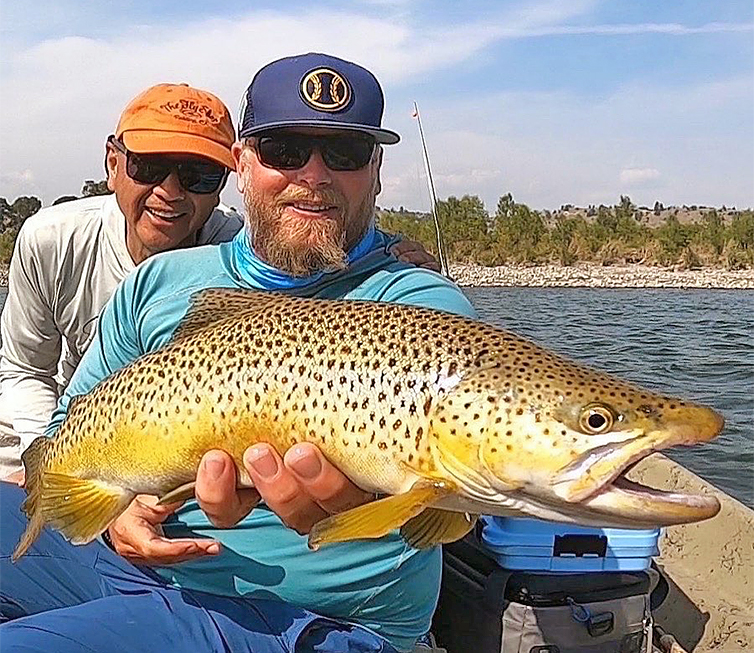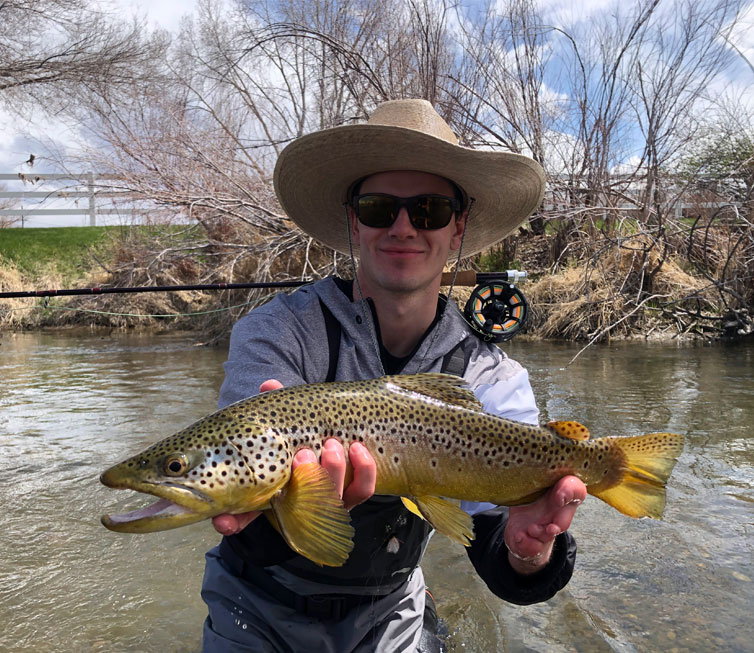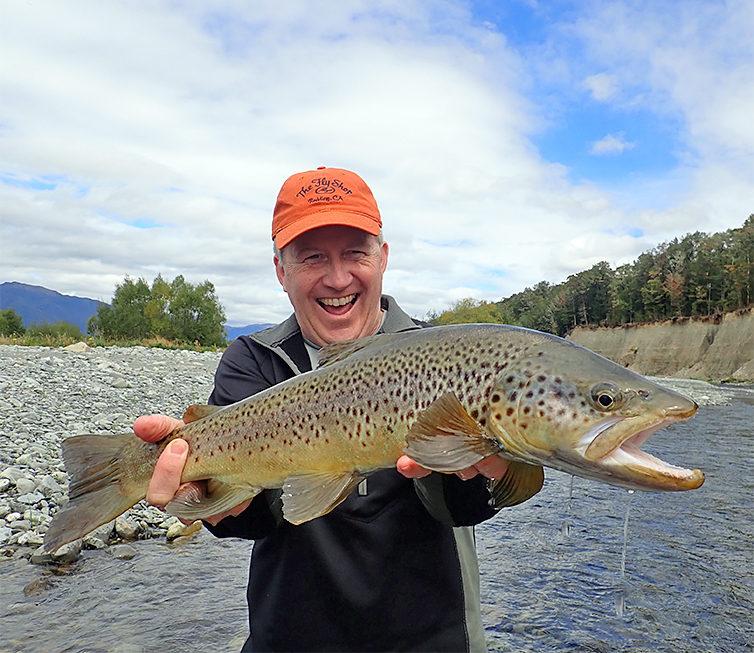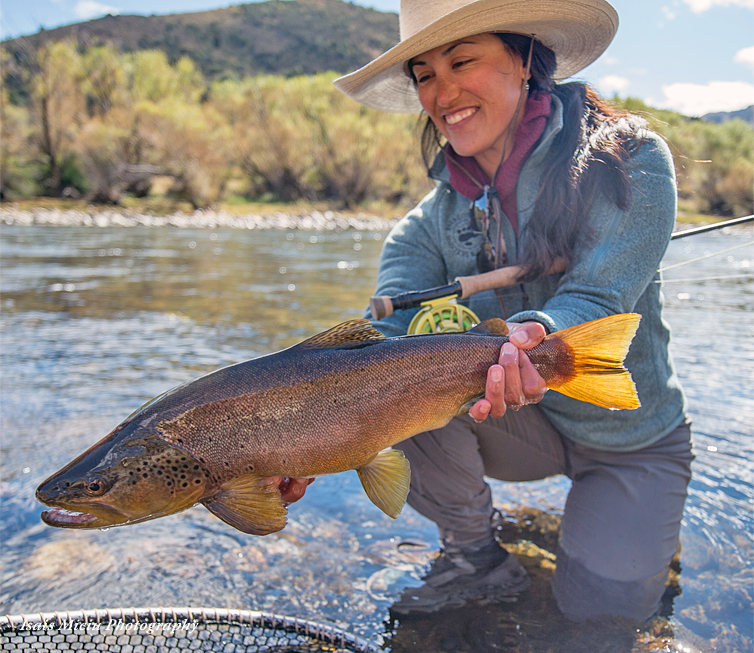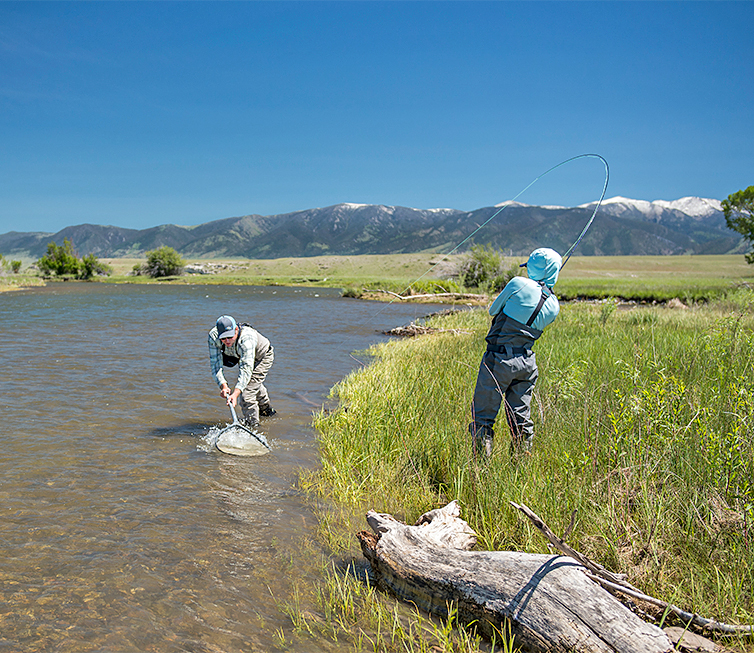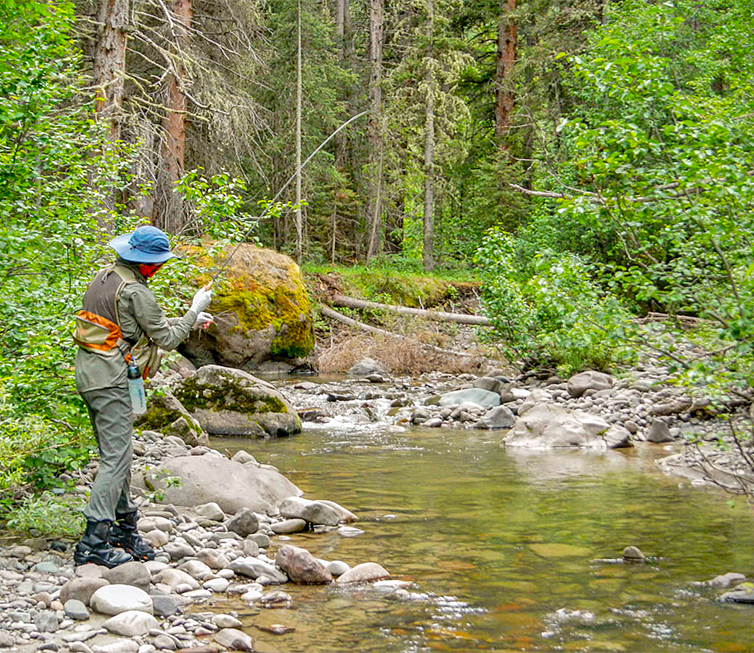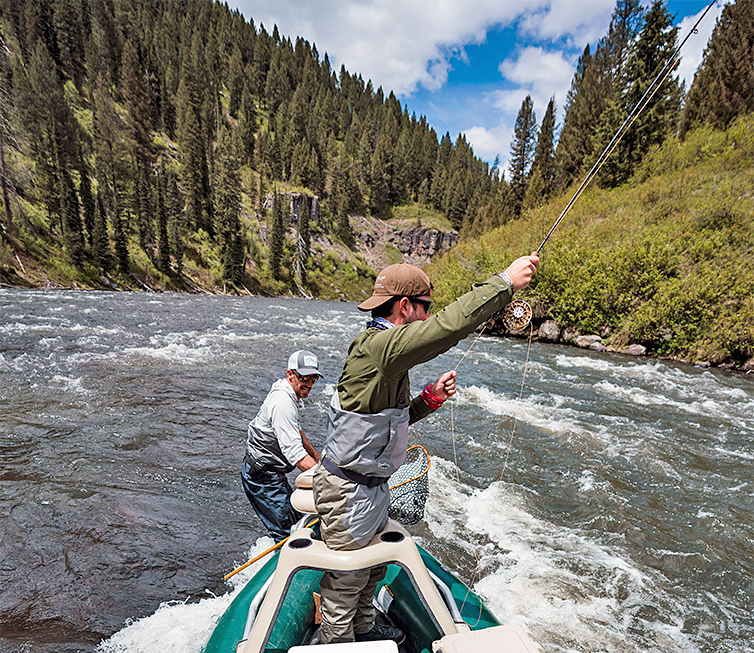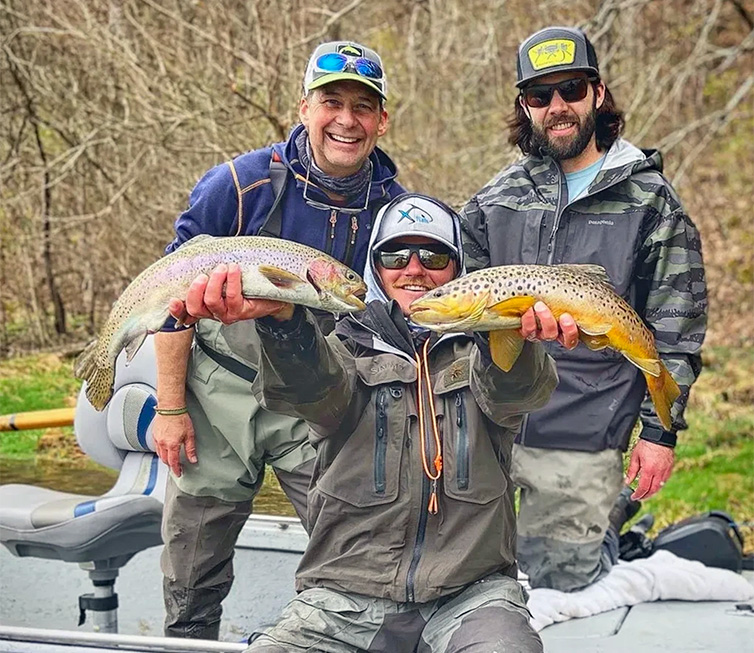The brown trout (Salmo trutta morpha fario and S. trutta morpha lacustris) and the sea trout (S. trutta morpha trutta) are fish of the same species.
They are distinguished chiefly by the fact that the brown trout is largely a freshwater fish, while the sea trout shows anadromous reproduction, migrating to the oceans for much of its life and returning to freshwater only to spawn.
The brown trout is a medium-sized fish, growing to 20 kg or more in some localities although in many smaller rivers a mature weight of 1 kg (2 lb) or less is common. The spawning behaviour of brown trout is similar to that of the closely related Atlantic salmon. A typical female produces about 2,000 eggs per kilogram (900 eggs per pound) of body weight at spawning.
Young brown trout feed on insects and other invertebrates such as shrimp flies, caddis, stonefly, mayfly, etc. Both larvae and adults are taken and the fish will eat whatever local insect life is abundant at the time. Larger fish are active predators of fish including young brown trout, suckers, sculpins, shad, whitefish and rainbow trout. Larger brown trout will also feed on small terrestrial animals that fall into the water such as baby birds falling from overhanging nests, or even swimming mice/voles. Brown trout sometimes do not actively feed until the late afternoon or early evening but when the weather is cool they will feed during the day as well. The largest browns feed under cover of darkness.
